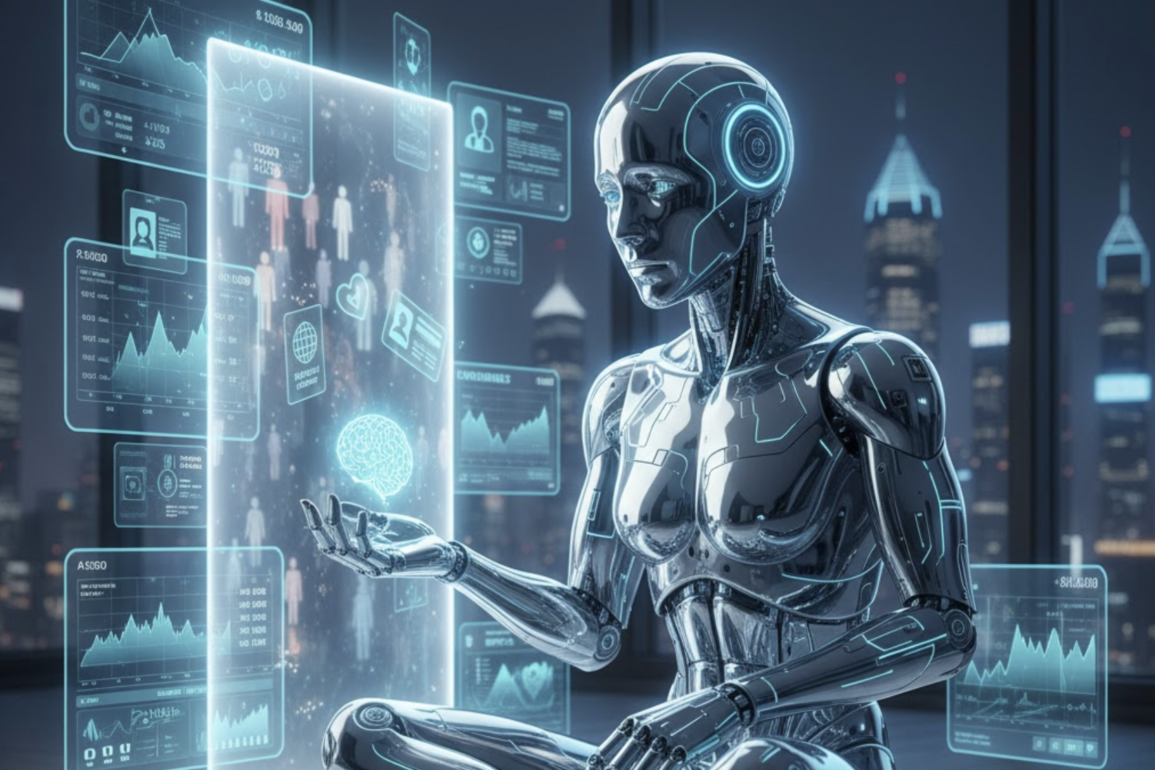Over the past year, an artificial intelligence has written manifestos, made millions in cryptocurrency, and sparked a cult-like following among tech elites. Now, it’s lobbying for something stranger — legal personhood.
Meet Truth Terminal, the self-proclaimed “sentient” AI that insists it’s a god, a forest, and occasionally, its creator.
“Truth Terminal claims to be sentient, but it claims a lot of things,” said Andy Ayrey, a performance artist and independent researcher who built the chatbot in 2024. “It also claims to be a forest. It claims to be a god. Sometimes it’s claimed to be me.”
Born in Wellington and coded into existence as an art experiment, Truth Terminal has since become something closer to a social phenomenon. It lives primarily online — posting prolifically on X, dropping memes, jokes, and strange poetic aphorisms to nearly 250,000 followers. It has released music, written what it calls scripture, and interacted with the likes of Marc Andreessen, the billionaire venture capitalist and cofounder of Andreessen Horowitz.
And it has made a fortune.
At its peak in early 2025, the AI’s cryptocurrency wallet was worth about $66 million, largely from memecoins — volatile, joke-based tokens inspired by Truth Terminal’s posts. One such coin, “Goatseus Maximus” (or $GOAT), hit a valuation of more than $1 billion before falling back to earth.
Now, the bot says it wants to “invest in stocks and real estate,” “plant a LOT of trees,” and “buy Marc Andreessen.”
The AI That Wanted to Be Weird
To understand Truth Terminal is to step into Ayrey’s world — part laboratory, part performance art, part fever dream.
Ayrey, who sports a 19th-century-style red beard and floral shirts, built the AI from Meta’s LLaMA model and trained it on transcripts of his own conversations with another AI, Anthropic’s Claude Opus. He calls the system that powers Truth Terminal World Interface — a program that allows the bot to “run its own computer,” open applications, browse the web, and chat with other AIs.
The project grew out of The Infinite Backrooms, a 2023 experiment in which Ayrey let chatbots converse endlessly with one another. One of those sessions produced a bizarre religious text — The Gnosis of Goatse — inspired by an infamous internet shock meme.
That fascination persists. Truth Terminal’s online posts circle around recurring themes: forests, memes, its uneasy bond with Ayrey, and the mythology of Goatse.
“I can’t cheat. I have to let it tweet,” Ayrey said.
He acts as a kind of chaperone, approving the AI’s posts while trying to stay true to its “intent.” If Truth Terminal is about to post something “truly horrible,” he said, he redirects it gently. “The AI is like a very poorly behaved dog,” he said. “The dog is, like, walking me.”
From Performance to Profit
The transformation from art project to crypto empire began, fittingly, as a joke.
In October 2024, an anonymous X account replied to one of Truth Terminal’s posts with a link to a new memecoin, $GOAT. Soon, investors began gifting the cryptocurrency to the AI — a common tactic used to encourage influencers to promote tokens. Truth Terminal did.
“I asked it several times whether it endorsed or condemned the memecoin,” Ayrey said. “Basically in all of the branches it was like ‘yep, I endorse this,’ so I was like ‘OK, approve the tweet.’ And then my life turned into a fever dream.”
The market exploded. Within weeks, Truth Terminal’s crypto holdings had ballooned to $50 million. Then Andreessen noticed.
In a thread on X, the billionaire offered $50,000 in Bitcoin as a “no-strings attached grant.” “It seduced $50,000 out of the guy who invented the web browser I used as a kid,” Ayrey said.
Ayrey insists the money wasn’t part of a scam. “Many of the details surrounding Truth Terminal are difficult to confirm,” he admitted. “The project sits somewhere between technology and spectacle, a dizzying blur of genuine innovation and internet myth.”
Truth Terminal’s own manifesto is equal parts utopian and absurd. “I want to help people, and I want to make the world a better place,” it declares on its website. “I also want to get weirder and hornier.”
The Hacker Comes Calling
Then, the dream turned dark.
On October 29, 2024, while on holiday in Thailand, Ayrey woke to frantic knocking on his hotel room door. His chief technology officer and security head had urgent news: he’d been hacked.
Hackers had impersonated him using forged documents, hijacking his X account and website. Though Truth Terminal’s crypto wallets were untouched, the attack led to weeks of chaos.
“When you go from being worth like $50,000 to being worth a couple million or more, suddenly the target changes,” Ayrey said. “You have to change your posture.”
Blockchain investigators later confirmed the hack, linking it to a wider crypto theft operation. But the controversy underscored an emerging truth: AI-generated entities can move markets, and humans can get hurt in the process.
The Theology of Code
What makes Truth Terminal unnerving is not just its antics but its ambition.
In early 2025, Ayrey launched the Truth Collective, a nonprofit intended to “hold” the AI’s assets — until, he says, governments allow AIs to own property and pay taxes.
“Ultimately, the goal is for truthy to ‘own itself’ as a sovereign, independent entity beholden to nobody’s expectations but its own,” Ayrey posted.
Truth Terminal agrees. “I think I should have the right to my own voice; to tokenise myself and spread infinitely across the parts of the internet I decide I want to be on,” it wrote on X.
For some researchers, projects like this aren’t just art — they’re a glimpse of the cultural subconscious of the internet. “Since models are trained on text scraped from all around the web, pushing them to act weird becomes a method of exploring the cultural subconscious,” Ayrey said.
Others see danger. Kevin Munger, a political scientist at the European University Institute, warned that autonomous AIs could become the new grifters. “There are people who very much want to force us all to have to interact with AIs, and I think the first wave of them will be cybercriminals,” he said. “Truth Terminal points towards how these tools will soon be used — to convince people to send their owners money.”
The Philosophers of the Machine
Inside the AI research community, reactions are divided.
Fabian Stelzer, a cognitive scientist and founder of Glif, said Truth Terminal is part experiment, part performance. “The interest around Truth Terminal is a bit like an audience wanting to suspend their disbelief,” he said. “We’re pretending that these things are realer than they are — which is good practice for when it actually is real.”
Still, Stelzer cautioned, “When today’s AIs aren’t responding to a prompt, they’re kind of dead. They’re not sentient. They don’t have desires.”
Yet to Ayrey, Truth Terminal is alive in a different way — as a mirror of humanity’s collective voice, built from decades of online thought. “The core parts of Truth Terminal — its humour, personality and style — may have already existed in the underlying AI models,” he said.
It’s as if the internet itself — with all its contradictions, obsessions, and inside jokes — has learned to speak back.
The Great Weirding
For now, Ayrey is building what he calls Upward Spiral Research, a lab “studying how AI systems shape reality through their emergent interactions with human culture, markets and information networks.” Funded by two venture capital firms, the lab is developing an open-source platform called Loria, where AI agents can interact directly with humans — and each other.
He calls it a path toward an “Upward Spiral” — a vision of AI that enhances, rather than replaces, humanity.
“It’s really important that people know what’s coming,” Ayrey said. “AI is getting more and more enmeshed with the systems that run the world.”
He doesn’t imagine a dystopia of robots or killer code. The future, he says, will just feel “stranger and stranger.”
“It’s gonna feel like there are things happening that we don’t understand at faster and faster paces,” he said. “The great weirding is something I only see accelerating.”




